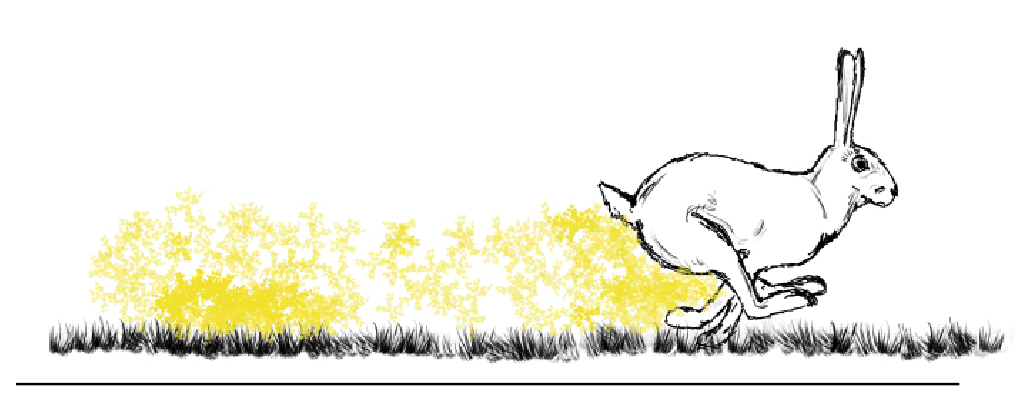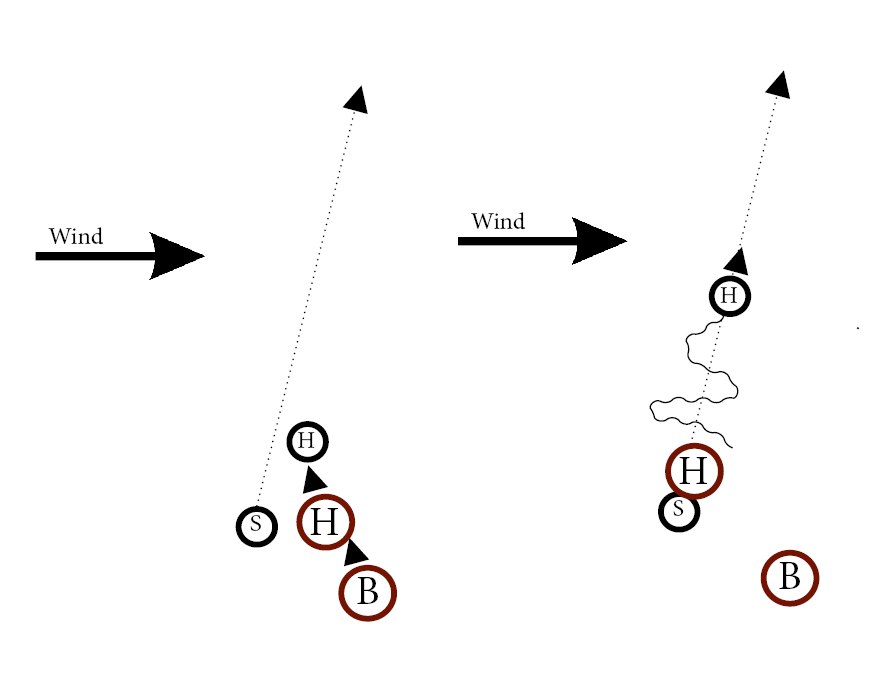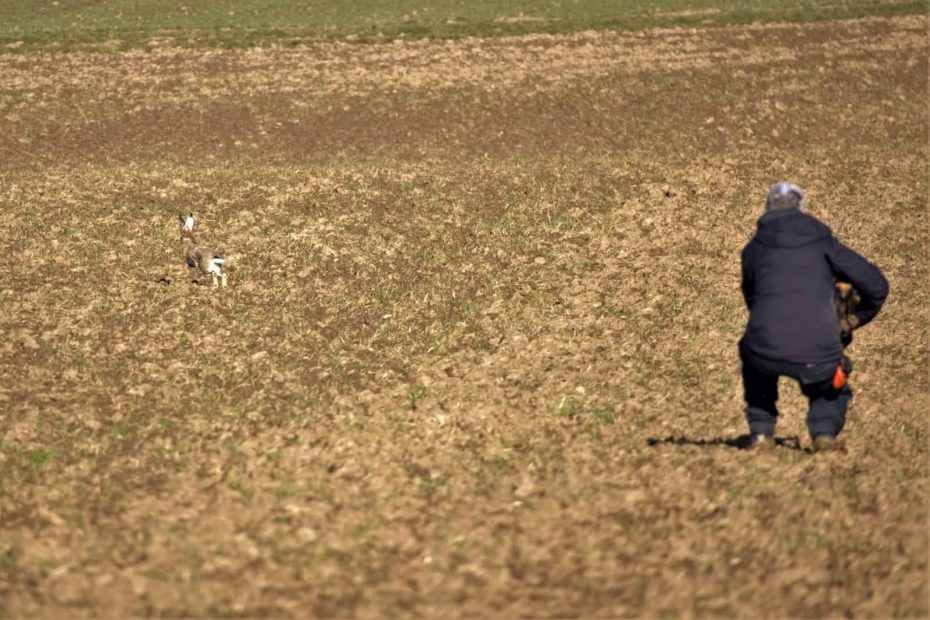For German language, click here
It’s March, the Spurlaut tests are starting. As a Hound, the Teckel should show a consistent, strong voice on the hare track. The Spurlaut is a genetic trait, it cannot be “trained” into a dog. But why is it tested on the hare and is it necessary to practice for a test at all? In this blog post we will show you the steps to a successful test.
Understanding the basics
The Spurlaut (voicing on scent) is a most likely dominantly inherited trait that is present in many of the Teckel’s hunting lines. If you acquire a Teckel from two proven voicing parents, the chances of getting a voicing dog are high. However, if both are not homozygous Spurlaut, mute dogs may also result from such matings. Such a dog will not be able to learn how to voice on scent, he will work the track mutely until the end of his life.
But now comes the difficult part – even a genetically Spurlaut dog will show this trait only with increasing age. Some already with 4 months, some with 15 months or even later.
Also, the quality of the voicing is different depending on the individual: some show the Spurlaut already with very few scent particles around, (they have a low stimulus threshold) some need a very strong scent trail as a trigger – they have a high stimulus threshold. Extremes with very low stimulus thresholds are often categorized as babblers (babbling means voicing without a scent), but in reality they often work a very old scent track, or a human scent, or even their own back track. The other extreme may never make a single sound under typical test conditions – because it needs an intense scent trail that is only a few seconds old, and under the best conditions.
Best conditions means no/low wind, moist ground, mild weather, short vegetation, flat terrain with no obstacles. Thus, even dogs with a rather poor voicing will show satisfactory work if they are put on the track quickly enough. With every second that passes, the track fades. Only a few seconds can be decisive for a dog with a weak Spurlaut.
Why a hare track?
Spurlaut is traditionally tested on the hare, and there are good reasons for that. The first is purely practical. The hare, as a classic field dweller with a fast, wide escape into the field, allows the judges to observe the track closely. Its habit of ducking in case of danger and fleeing only at the last moment allows the dog to start on a very fresh track, with a starting point that is known exactly.
Furthermore, the hare gives a very fleeting, faint scent that causes no/hardly any ground disturbance – so, the nuances and quality of the voicing can be evaluated many times better than on a “scent highway” left by a deer, for example.
Therefore, the hare track allows a good evaluation not only of the Spurlaut, but also of the nose and passion – two other very important characteristics of the hunting Teckel. By nose, we do not mean the dog’s ability to smell, but the ability to quickly categorize and process olfactory information in the brain – and convert it into stimuli for movement. A dog with a good nose recognizes intensity gradients with each sniff in a fast run and adjusts its direction accordingly – taking into account changes in terrain and wind. He is able to create a three-dimensional mental image of the track, which allows him to quickly initiate the right maneuver to pick up the track again in case of track loss. Passion, or the will to find, is the motor that drives him.
How to practice right
As already mentioned, even if the Spurlaut is a genetic trait, sufficient practice should be done in advance. In young dogs, the passion must first develop, the voicing must mature and the nose must be trained for the new situation. The currently held up early maturity has not only advantages in breeding – also, a dog that is Spurlaut early on, is not necessarily the better hunting dog. Patience is the key to success here.
For the first exercise, it is best to wait for an optimal day. So mild weather with moist vegetation, in flat terrain. The hare is confirmed beforehand with binoculars or a thermal imaging camera and then approached with two people. The handler has his young dog in his arms, on a long drag line with a wide collar, and has the dog´s eyes closed or the dog turned away from the hare. The dog should not see the hare under any circumstances. The helper walks in a line behind the handler. As soon as the hare goes up, the handler fixes the starting point of the track (hare’s form), the helper follows the escaping hare with his eyes. The handler moves quickly to the form and places the dog behind it on or just beside the track, at best in such a way that the wind carries the scent particles of the track to the dog – this allows the dog to quickly notice the track and not get stuck at the initial hiding point of the hare. As a dog handler, you can stand right in the hare’s form to shield the dog from it. Why do young, inexperienced dogs go to that point and even dig in it? The brain tells them to move along the intensity gradient. This means, always towards the higher odor intensity – this is how it is possible for a dog to advance a track in the right direction in the first place. However, the initial hiding spot of the hare is the point of highest intensity at that moment, so the dog suspects the hare in or under it. The young brain must first learn to solve such “olfactory riddles”.




As soon as the dog takes on the track, the handler has to follow fast. When it leaves the track, the leash will prevent it from running in the wrong directon. It is a tool to help the dog finding the track again. You should only help it when it is necessary, and not talk to the dog too much. It can end up in animating in to voice without an actual scent, out of excitement. Working the track is a self-rewarding behaviour for the dog, so you don´t need to praise it – it can irritate your dog. Only very insecure dogs need more help and encouragement to pick up the track.
During the first time, the leash is a tool to prevent your dog from too much running around or even following an visual stimulus like a bird and abandoning the track. In addition to that, being “hold back” by a leash can increase the passion and will to follow the scent line, and trigger the voicing. When your practicing areas are close to streets, its no problem to prepare a dog only on a leash for its Spurlaut test. Only very unsure dogs should practice without leash at least a couple of times to learn to work with distance to the handler.
So, if you are practicing without leash, you and your helper should stand still as soon as the dog starts working. By following it, you will give him hints where the track is with your bady language and walking direction. A dog is learning best when it has to figure it out all by itself.
If your dog is not interested in the track whatsoever, it is maybe still to young or the conditions are too hard for it. So, wait a couple of weeks or months for the dog to mature or try on a better day.
The Working Test
Most important, you need to know the regulations of the Spurlaut test, and get familiar with them. Nothing is worse than getting a bad score because of mistakes that could have been prevented by more knowledge.
Prepare all you need for the test day: pedigree, vaccination card, GPS tracker, reflection collar, a easy to release leash, water and food, something to cover the eyes of your dog.
Be cautions what the judges are telling you, move fast, keep your dog quiet when others are working.
We wish you good luck!
If you want to learn more about Spurlaut, take a look into our newest publication:
The International Working Teckel Volume II
If you have any questions regarding Spurlaut, feel free to ask us!
